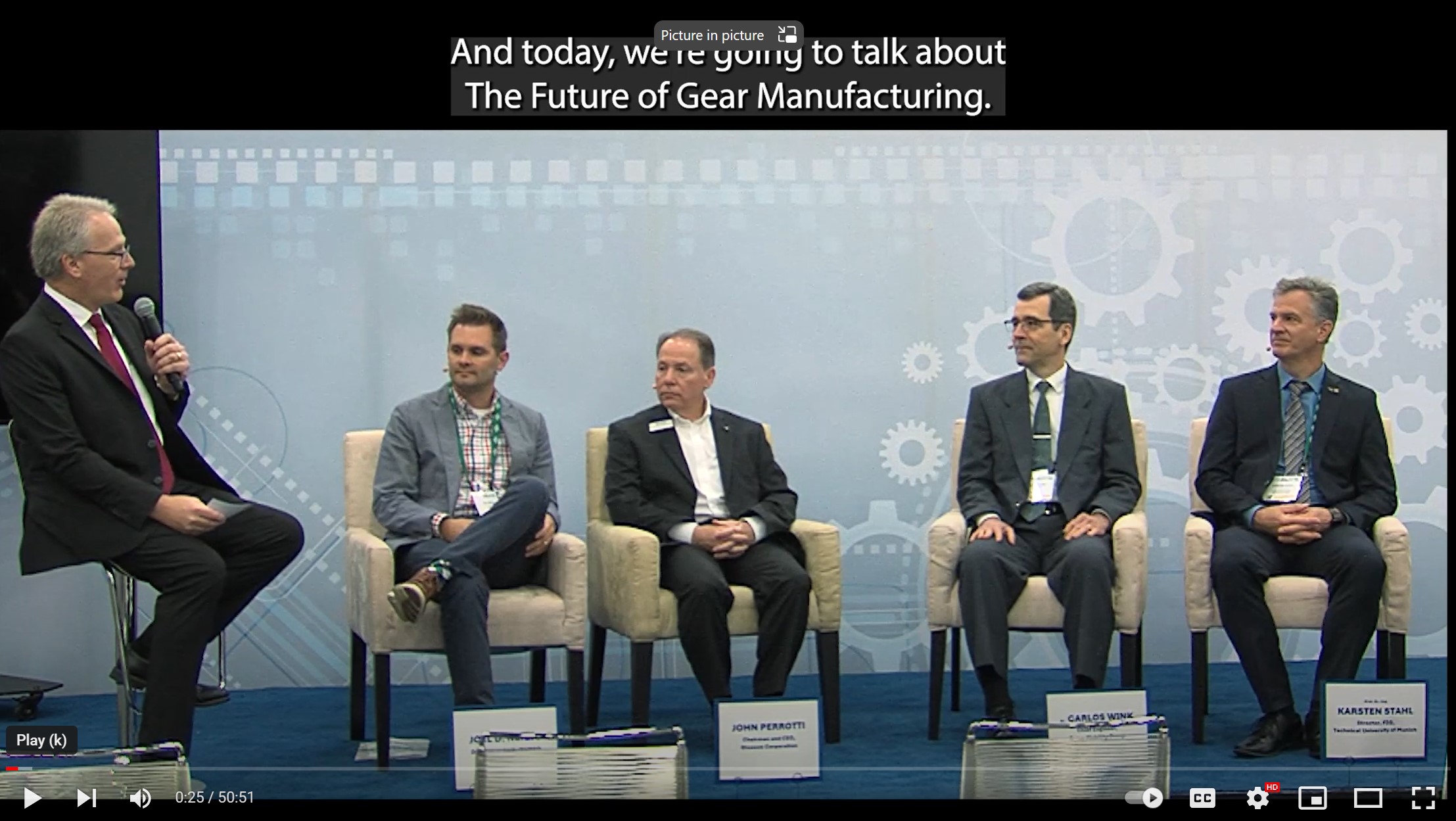Introduction
The industrial internet of things (IIoT) as a promising approach towards higher efficiency is well known and extremely fashionable. Klingelnberg provides a broad portfolio of services and software solutions to address different topics of gear production digitally (from sensors to the cloud).
The benefit for customers lies in bundling gear and machine knowledge into sophisticated software solutions. This is an important component in order to achieve great production results and a reason for a partnership with Klingelnberg.
However, the development of tangible software solutions in the context of IIoT that deliver concrete value beside a core machine business has just begun. New IT technologies emerge regularly and widen the corridor for feasible solutions. In order to create promising product roadmaps for digital solutions the German science association acatech released a digital maturity index.
In the following, this maturity index is used to classify the cornerstones of Klingelnberg’s digital solutions in its current state. Furthermore, a projection of these solutions to the future of the maturity index is outlined. One should see that only an intensive cooperation between machine providers and producers can lead to a mature digital shop floor for gear manufacturing.
The Digital Maturity Index
Figure 1 depicts the digital maturity index adapted by Klingelnberg. Of course, there is a perspective on single machine systems. At the very least, they need a computer which is common for all CNC machines. Connectivity is also a basis requirement for machines when talking about digitization. The final goal is to make decisions based on predictive analysis and have automatically adaptive production systems or processes. But before you can go there, it is necessary to create a "visibility of information" by collection and aggregating these processes. Many solutions are available here in the context of MES, but solutions are missing that take the specialties of gear production into account. That is why Klingelnberg is very active in this field of information visibility and transparency for gear production.
 Fig 1. Klingelnberg’s interpretation of the digital maturity index by acatech.
Fig 1. Klingelnberg’s interpretation of the digital maturity index by acatech.
There is no doubt that modern CNC based gear production machines do not lack computerization and connectivity technologies. A modern Höfler Generating Grinding Machine Speed Viper by Klingelnberg holds an industry PC with a 19” touch panel and the operator’s fingertips can access every function of the machine. Also, advanced connectivity scenarios do not pose a challenge since Klingelnberg machines commonly interplay within a network of different IT systems (the Closed Loop).
Gear design, compensations, measurement results and machine parameters are shared across the network and can be manipulated via web applications from everywhere. The newest member of Klingelnberg’s product family addressing connectivity concerns is the OPC UA umati interface. OPC UA represents a modern standard for data exchange. This standard is characterized above all by the fact that not only the individual data but entire information models (including the semantic description of data) are transported. Umati is a special extension of the OPC UA server and describes a universal interface to machine tools and systems.
The detailed contents are regulated in the VDMA specification VDMA 40501-1 (OPC UA for Machine Tools - Part 1: Machine Monitoring and Overview of Processing Orders). Currently, the following status data of the machine is standardized with an update rate of around one second: Uniform identification of the machine, operating status of the machine, information about production order, program progress and finally error messages and warnings. With this software customers may easily integrate Klingelnberg machines into existing MES systems by using generic interfaces.
Information visibility and transparency
The next steps on the maturity index address the act of creating information visibility and transparent processes. The leading question here tries to solve what happens in the process and why it happens. A perfect example is the Smart Process Control solution for gear cutting machines. Here, a special software on the machine is transferring process information and machine tool utilization like spindle loads to a database. Deciders and process designers access this database with a web tool as shown in Figure 2.

Another example for increasing visibility and transparency of production processes is the SmartTooling system. All production equipment like cutter heads and fixtures get a data matrix code and the machine gets equipped with a scanner. Yesterday, operators typed in geometrical information of fixtures manually. But today, with SmartTooling, it is just a scan and data is transferred from a central database to the machine. Utilization data is transferred vice versa. Consequently, manual information input is not required anymore because all the information about the usage of equipment is stored and can be used to identify critical equipment that may be exceeding its usage limits.
Prediction and adaptability
The highest degree of maturity foresees solutions that allow to predict processes and make automatic adaptions to it, if required. Today, there are no real solutions which address the whole manufacturing process or at least crucial parts of it (like grinding for final quality). Of course, Klingelnberg is working on this topic in different customer projects but a real “out of the box” solution is not in sight. These projects are always very individual and depended on concrete process variations.
An exciting technology that is required for predictive maintenance or for a prediction of resulting part quality is edge computing. Here, an additional PC is integrated in the machine. This device can write up to 100 signals of the CNC during the machining process. With this amount of data and the correlation to data of end of line tests the future trend goes to big data analytics. Klingelnberg provides knowledge for data analytics and edge computing, but there is still a long way to go. The success of a roadmap to predictive analytics is the joint operation of customers and machine providers.
Conclusion
The maturity index by acatech is a profound tool to align digital solutions along a roadmap. Here, a small categorization of current Klingelnberg solutions, according to different stages of this index, were done. The first steps of “computerization and connectivity” as well as “visibility and transparency” are covered well. Future activities occur in the “prediction and adaptivity” field where Klingelnberg is focusing its efforts.







